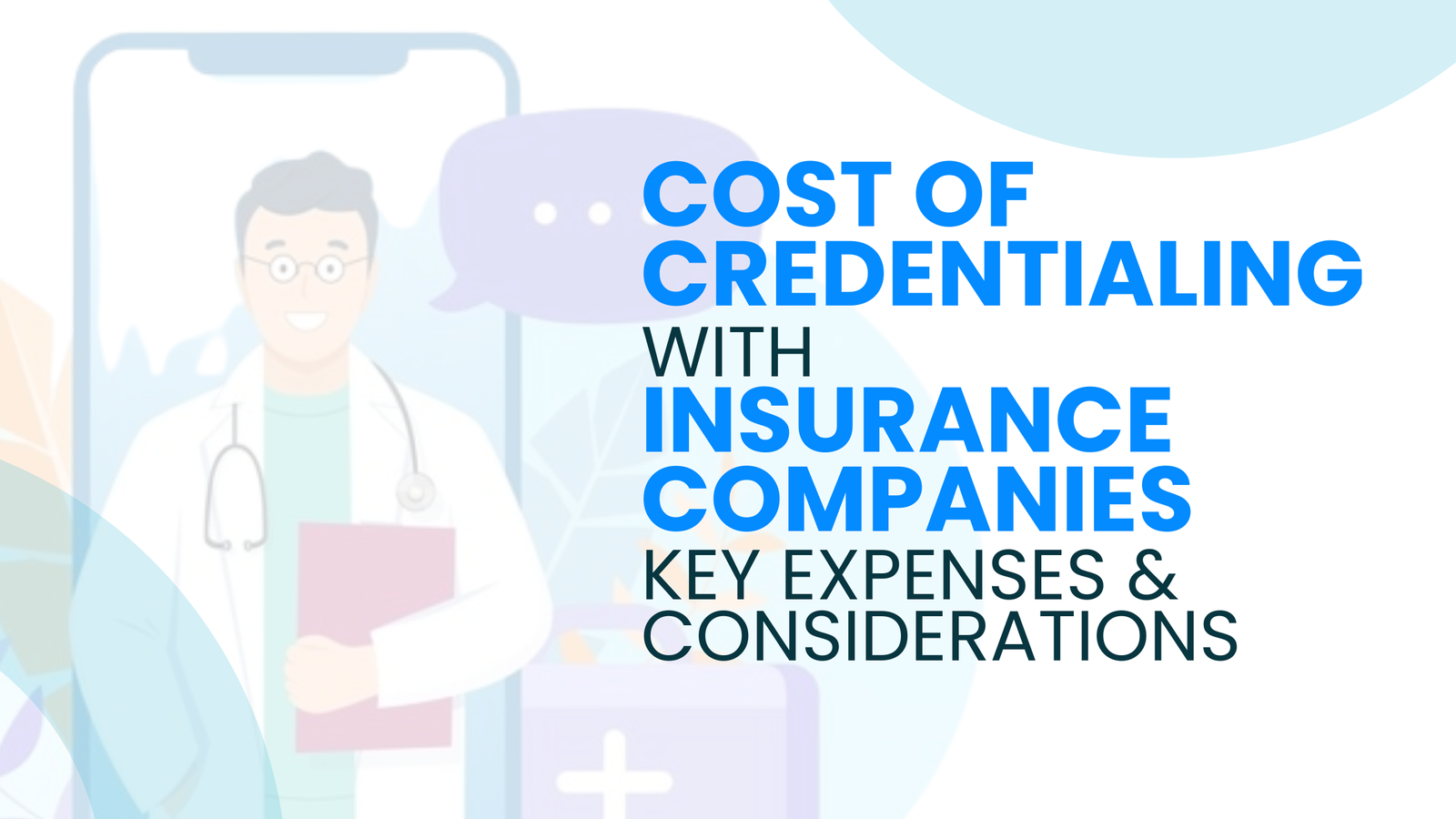Navigating the realm of insurance credentialing can be a complex task for mental health providers. The cost of credentialing with insurance companies often means accepting lower reimbursement rates, which are set by the insurers rather than reflecting the actual cost of services. This can lead to significant financial challenges for therapists who must balance providing quality care with operating within tight budget constraints.
Economic credentialing practices further complicate this landscape. Insurance companies use these strategies to manage costs, sometimes by excluding high-cost doctors from their provider panels. As a result, you might find yourself working harder to meet both your financial needs and your clients’ care needs.
Understanding these dynamics is crucial for anyone in the healthcare field. Credentialing decisions not only impact your income but also the quality of care that you can deliver. This blog post will delve deeper into these issues and help you navigate the credentialing process with insurance companies more effectively.
Understanding the Process of Credentialing
To work with insurance companies, healthcare providers need to go through a credentialing process. This involves verifying qualifications and obtaining approval to bill for services.

Basic Steps in Credentialing with Insurance Companies
The credentialing process starts with an application. You will need to gather and submit documents such as your medical license, malpractice insurance, and board certifications. Then, background checks are conducted. This covers things like your education, training, work history, and any disciplinary actions. Finally, the insurance company reviews the application. They may require additional information or clarifications before granting approval.
Key Documents Required
- Medical license
- Board certifications
- Malpractice insurance
- Malpractice insurance
Completing these steps correctly is crucial for a smooth credentialing experience.
Timeframe for Credentialing Completion
The credentialing process can take anywhere from a few weeks to several months. This varies based on the insurance company and completeness of your initial application.
Average Timeframes
- Application Submission: 1-2 weeks
- Verification and Background Checks: 4-8 weeks
- Final Review by Insurance Company: 2-4 weeks
Delays can occur if documents are missing or if the insurance company needs more details. Staying organized and responding quickly to requests can help reduce the time it takes to get credentialed. Using these timeframes, you can better plan when to start the credentialing process to avoid interruptions in your ability to provide care.
Direct Costs of Credentialing
Credentialing with insurance companies involves various direct costs, including application fees and expenses for obtaining necessary documentation. These costs can add up and impact your finances significantly.

Application Fees and Dues
When you apply for credentialing, insurance companies often charge application fees. These fees vary widely, from a few hundred dollars to over a thousand dollars. Some companies may also require annual dues to maintain your credentialed status. You may encounter separate fees for each insurance plan you apply to. Additionally, many companies have specific deadlines for fee submissions, which means you’ll need to carefully plan your budget.
Costs Associated with Required Documentation
Credentialing requires extensive documentation. This includes certificates, licenses, and transcripts. Obtaining these documents often incurs costs, such as reproduction fees or notarization charges. Some states or countries may charge for issuing new or replacement documents. If you need to send documents via certified mail or courier services, the costs can also increase. There are also costs for translation services if any documents are in a language other than English. Filing fees for background checks and other verifications may also apply, further adding to your expenses.
Indirect Cost of Credentialing with Insurance Companies
Indirect costs of credentialing can significantly affect healthcare providers. They include administrative burdens, staffing expenses, and opportunity costs related to the time investment of obtaining and maintaining credentials.

Administrative Burden and Staffing Expenses
Credentialing requires a lot of paperwork and data management. Your staff will need to compile extensive documentation, including qualifications, past work history, and other relevant details. This process can be very time-consuming. You might need to hire additional administrative staff or reallocate existing employees to manage this workload.
The salary and benefits for these staff members add to your operational costs. Errors in documentation can cause delays and financial penalties. Efficient and error-free management of credentialing tasks becomes vital in keeping administrative costs under control.
Strategies to Minimize Credentialing Expenses
To reduce costs related to credentialing with insurance companies, leveraging technology and following best practices can be highly effective. Here are specific strategies to help you achieve this goal.
Leveraging Technology and Credentialing Services
- Technology plays a key role in streamlining the credentialing process. Automated systems and specialized services can minimize manual tasks, reducing time and mistakes.
- Automated credentialing software can consolidate data entry, track expirations, and send reminders for documentation updates.
- Using cloud-based systems allows for real-time updates and easy access to documents from any location.
- Credentialing services are specialized firms that can handle all aspects of the process. They maintain up-to-date records, ensuring compliance and reducing administrative overload.
- Invest in technologies that support secure data sharing and storage to safeguard sensitive information.
Best Practices for Efficient Credentialing
- Adopting standardized procedures and maintaining thorough records can also help reduce expenses.
- Create a detailed checklist of required documents to ensure nothing is missed.
- Regularly audit your files to ensure all credentials are up-to-date and correct. This proactive approach saves time and reduces the risk of denials.
- Set up a clear communication channel with insurance companies. Clear guidelines and open lines of communication can prevent misunderstandings and delays.
- Train your staff on credentialing requirements and procedures. Educated employees can handle the process more efficiently, reducing errors and time spent on corrections.
Frequently Asked Questions
The average fee for medical credentialing services ranges from $100 to $500 per provider. Some services might charge a one-time fee, while others may bill monthly for ongoing support. You can contact us for more info.
Credentialing software costs can vary widely. Some basic systems might cost around $50 a month, while more comprehensive solutions can be several hundred dollars monthly. Setup fees may apply as well.
For nurse practitioners, the process involves submitting an application, verifying education and licenses, and undergoing background checks. Insurance companies may also require peer references and proof of clinical experience.
Credentialing involves verifying a healthcare provider’s qualifications, such as licenses and certifications. Enrollment, on the other hand, is the process of getting approved to bill an insurance provider for services rendered to patients.
Being credentialed can increase patient trust and expand the patient base, as more individuals can use their insurance. It also ensures compliance with legal and industry standards, which can reduce liability risks.

